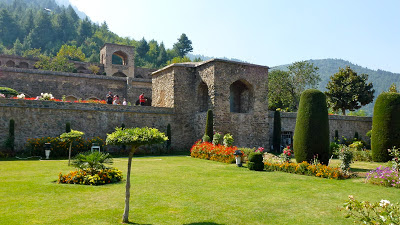Al-Masjid al-Ḥarām (Arabic:
المسجد الحرام, pronounced "The Sacred Mosque") or the
Grand Mosque surrounds Islam's holiest place, the Kaaba. It is located in the city of Mecca and is the largest mosque in the world. Muslims around the world turn toward Kaaba while performing any
prayer. One of the
Five Pillars of Islam requires every Muslim to perform the
Hajj pilgrimage, at least once in his or her lifetime if able to do so, including
circumambulation of the Kaaba.
The current structure covers an area of 356,800 square metres
(88.2 acres) including the outdoor and indoor praying spaces and can
accommodate up to four million worshipers during the
Hajj period, one of the
largest annual gatherings of people in the world. Unlike many other mosques which are segregated, men and women worship at Masjid al-Haram together.
The cave of Hirâ' is located in one of the outlying mountains
surrounding Mecca. It is the place where Prophet Muhammad (peace be upon
him) received the first revelation.
Before he began receiving revelation, the Prophet Muhammad (peace be
upon him) used to go to the cave of Hirâ' to meditate in solitude. It
was on one of these retreats that the Prophet (peace be upon him) was
first visited by the angel Gabriel and heard from him the first verses
of the Qur'ân.




















































